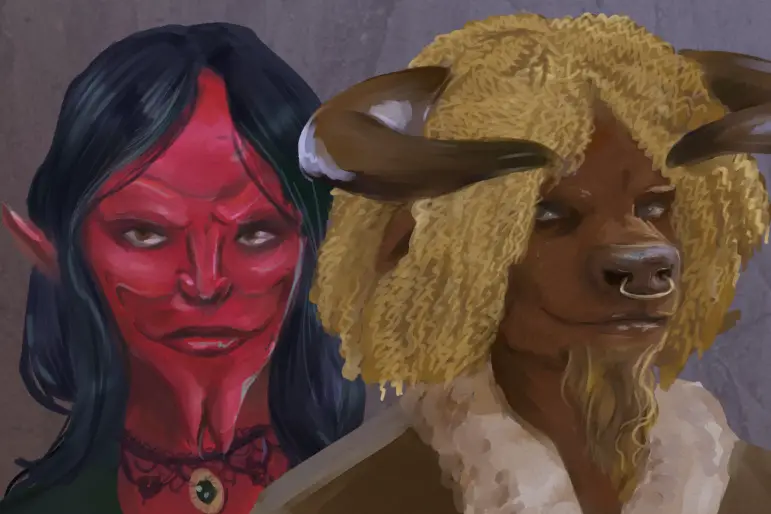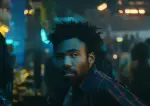Reality TV is an American invention. It captures the nation in all its trashy excess. From the privileged catfights on the “Real Housewives” to the illegal activities on “Dance Moms,” we all love a mess. Nothing is messier than the dating genre, where two people are thrown together for millions of viewers in an evening time slot. The chaos that results from these mismatched couples is what makes dating shows so endearing. They tap into our animalistic urges as humans, the need to see each other at our lowest points. Of course, one dating show has taken the term “animalistic urges” a bit too far.
“Sexy Beasts” has the most bonkers concept for a show I have ever seen. It exists within a conventional framework, with a single lead ready to mingle with a group of contestants/love interests. The main twist is novel. The contestants go on their dates wearing heavy prosthetic makeup designed to look like creatures ranging from wolves to trolls. This makeup is frightening, making the show more of a furry convention than “The Bachelor.” However, the show fails to live up to its hook, reflecting a missed opportunity to comment on American dating culture.
The show first premiered in the U.K. in 2014, lasting for a single season (one could wonder why). It was next brought to the States by Netflix, where it premiered last month. “Sexy Beasts” is part of a current line of dating shows put out by the service to appeal to the “Bachelor” demographic. Each episode centers around the main subject and three contestants, all clad in prosthetics (the genders vary, but heteronormativity is maintained).
After a round of speed dating, the subject eliminates one of the contestants, who then reveals their true face to the subject, reflecting a potential missed opportunity. The subject then goes on a longer date with the remaining two contestants, with activities ranging from gin tasting to ax throwing, where they then pick a final romantic candidate.
There is potential here. “Sexy Beasts” could subvert expectations of beauty and focus on the internal while the external is being hidden. Also, the reason I chose to watch the show was for the ludicrous prosthetics. The show could enhance its message by making novel implementations of its hook, such as dating activities themed around the contestants’ personas. The show’s bizarre nature has the potential to flip reality dating on its head.
However, the show’s boring. This development, unfortunately, is the show’s most shocking. Despite the masks, it adheres firmly to the conventions of the dating genre. The prosthetics serve mainly as background fodder. The contestants may make snide remarks about one another’s looks but make few additional references. The furry lovers discuss the mundane details of their lives in bars where the customers barely react. It is as if the producers did not want to acknowledge the contestants’ ugliness to make sure the show is “grounded in reality.”
Furthermore, the contestants and subjects are uninteresting, with their development confined to a 25-minute runtime. Their backstories remain generic — a veterinary student from West Virginia or a model from England. The leads are looking for a cowboy or someone to pay their insurance. Their needs remain simplistic and adhere to proper tropes. The men are shallow, with one subject saying he is an “ass man.” The women may want slightly more, claiming their type to be “bad boy Barack Obama.” These shallow characterizations make the show predictable. I could project who the lead would ultimately choose for nearly every episode, even as dramatic close-ups try to make the final choice suspenseful. However, the show’s most significant error lies in its wasted thematic potential.
For context, the dating scene in America remains toxic. 30% of American adults have used at least one dating app. This omnipresence can be beneficial as these apps are efficient in pairing couples. However, this efficiency leads to shallow interpretations of an individual’s character. Tinder mechanics allow an individual to swipe “left or right” based on someone’s brief characteristics, and most importantly, their looks. It is a classic struggle in the current era. An attractive person garners romantic interest despite their horrible personality. However, “Sexy Beasts,” and other shows like it, could ask another question. What if a homely individual, a straight-up animal, could find love with the right personality? “Sexy Beasts” does not answer this question and instead adheres to the status quo.
The show fails to honor its message. The crux of the show is its final reveals of the contestants. The viewer must speculate upon who lies beneath the mask. Will the personality match the physical appearance? Often, the suspense is weak. Every single contestant on the show is attractive without overstatement. A strong personality meets a solid look to match. “Sexy Beasts” still adheres to the conventional beauty standards and is diminished by them. Imagine the intense emotion that would result if the subject or contestant was not conventionally attractive, but they still learn to love one another due to the romantic build-up. But that makes good TV, something this show is not.
A final issue with the show is something wrong with dating media in general. It acts like a forced marriage, with a contestant being “chosen” by a subject to enter a forced coupling. These romances are not organic and are never able to grow. This issue is found in dating culture as well. Romance is regulated more so than naturally spurred. “Sexy Beasts” could have allowed a slow burn romance, letting the viewer see the development of its “characters,” tracing a narrative arc in a way only nonfictional media can. But the show is not some grand experiment. Its animal hook is clickbait for a manufactured product. I am likely thinking more about this show than the showrunners themselves.
Over the six-episode run, there are hints of what the show could have been. The conclusion of the fourth episode is quite refreshing, as we witness the reveal of the chosen contestant and subject. The contestant, rather than passionately embracing our lead, lays down a boundary. She suggests they go on a few more dates to see if something more is there. This proposal could be “friend-zoning” or nuanced romance, depending on who you ask. Here, the show could ask significant questions about its premise. Is it really the way to true love? How does the idea of masking play with our perceptions of others, such as what we see here? These questions are failed possibilities much like the disappointed subjects after they eliminate a sexy contestant. Perhaps “Sexy Beasts” is just furry bait after all.

















